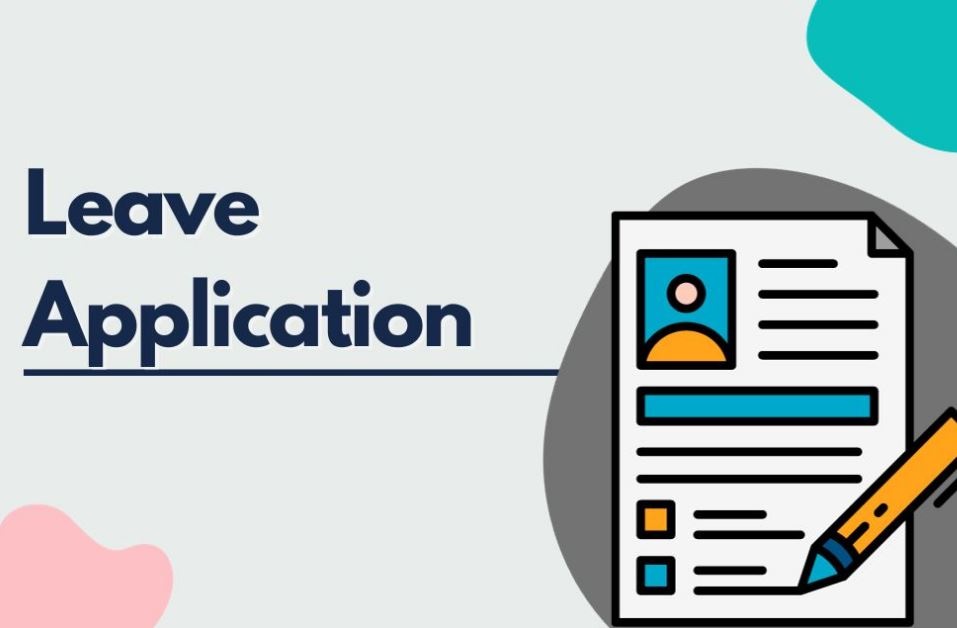Writing a leave application for school might seem simple, but even the smallest mistakes can lead to confusion or rejection. Whether you’re a student or a parent, a well-drafted leave application ensures clear communication and maintains a positive relationship with the school authorities. However, there are some common mistakes people make when crafting such letters, which can undermine their effectiveness. In this article, we’ll go over these mistakes and how to avoid them, ensuring that your leave application is professional, respectful, and effective.
1. Using an Informal Tone
One of the most common mistakes when writing a leave application is using an overly informal tone. School leave applications are official documents and should be written in a formal and respectful manner. An informal tone can come across as disrespectful or inappropriate, especially when addressing school authorities.
How to avoid it: Use formal language and maintain a respectful tone. Address the recipient properly with phrases like “Dear Principal” or “Respected Sir/Madam.” Avoid using casual language or slang terms in your letter.
Example:
Incorrect:
“Hey, I need to take a day off, so I won’t be able to come to school tomorrow.”
Correct:
“Respected Sir/Madam, I kindly request leave for one day, as I will be unable to attend school due to personal reasons.”
2. Providing Insufficient Details
Another frequent mistake is not providing enough details in the application. School authorities need to understand the reason behind your leave request, and simply stating “I need leave” may not suffice. An incomplete explanation can lead to unnecessary questions or delays in approval.
How to avoid it: Clearly mention the reason for the leave and the exact duration you’re requesting. If applicable, provide supporting details such as medical documents or notes. Always ensure you’re being transparent about the reason for the leave.
Example:
Incorrect:
“I need to take leave for two days.”
Correct:
“I kindly request leave for two days from September 25th to 26th, 2024, as I have a doctor’s appointment scheduled for a health checkup.”
3. Failing to Mention the Duration of Leave
Some leave applications fail to mention the exact dates or duration for which the leave is required. This leaves the school staff uncertain about when the student will return, which can disrupt class schedules and attendance tracking.
How to avoid it: Always mention the specific start and end dates for your leave. If you’re unsure about the exact return date, specify that it’s an approximation and commit to informing the school once the details are confirmed.
Example:
Incorrect:
“I need to take leave for some time.”
Correct:
“I request leave from September 25th to September 27th, 2024, due to personal commitments.”
4. Neglecting Proper Formatting
A poorly formatted letter can give a negative impression, even if the content is appropriate. Leave applications with no paragraphs, improper alignment, or lack of structure can appear unprofessional and may not be taken seriously.
How to avoid it: Stick to a clear format. Start with the sender’s details, followed by the recipient’s information, a salutation, the body of the letter, and finally, a polite closing. Use paragraphs to break down the content logically.
Basic Format Example:
Sender’s Information
[Your Name]
[Class/Section]
[School Name]
[Date]
Recipient’s Information
The Principal
[School Name]
[School Address]
Salutation:
Respected Sir/Madam,
Body of the Letter
- First paragraph: State the purpose of the leave application.
- Second paragraph: Mention the dates and reason for leave.
- Third paragraph: Express gratitude and request approval.
Closing:
Thank you for your consideration.
Sincerely,
[Your Name]
5. Not Including a Valid Reason
Some students or parents may write a vague or incomplete reason for requesting leave, which can lead to confusion or even the rejection of the application. Schools need valid reasons for approving student absences, and failure to provide one can be problematic.
How to avoid it: Always provide a genuine and clear reason for your leave. Whether it’s for health reasons, a family emergency, or personal commitments, make sure to explain the reason briefly yet clearly.
Example:
Incorrect:
“I need leave for some personal reasons.”
Correct:
“I kindly request leave from September 28th to October 2nd, 2024, as I will be attending a family wedding in another city.”
6. Overlooking Grammar and Spelling Errors
Grammar and spelling mistakes can detract from the professionalism of your leave application. School authorities may interpret poorly written letters as a lack of seriousness or attention to detail.
How to avoid it: Always proofread your leave application before submitting it. Use grammar-checking tools or ask someone to review it for you. A well-written letter reflects your diligence and respect for the recipient.
Example:
Incorrect:
“I wud like to take a leave becuz of a doctors oppointment.”
Correct:
“I would like to request leave due to a doctor’s appointment.”
7. Not Specifying Who Will Submit Assignments or Complete Missed Work
Leaving school for a few days can result in missed assignments or tests. Failing to address how the student will keep up with their academic work can lead to confusion or disruption in their education.
How to avoid it: Mention in the letter that arrangements have been made to catch up on missed work, or state that you will consult with teachers to complete assignments. This reassures the school that you are responsible for maintaining academic standards.
Example:
Incorrect:
“I need leave for three days. I will miss some classes.”
Correct:
“I request leave from September 20th to 22nd, 2024. I will coordinate with my teachers to complete any missed assignments upon my return.”
8. Forgetting to Include Contact Information
In case the school needs to reach you for any clarification or updates, it’s essential to provide contact details in your leave application. Failing to include this information can delay approval or lead to unnecessary complications.
How to avoid it: Include your contact number or email at the end of the application. If a parent is submitting the letter on behalf of a student, provide the parent’s contact information as well.
Example:
Incorrect:
No contact details at the end.
Correct:
“Please feel free to contact me at [Your Phone Number] if any further information is required.”
9. Submitting the Application at the Last Minute
Another common mistake is submitting the leave application at the last minute, leaving little or no time for the school to process the request. This can cause delays or even the rejection of the leave application.
How to avoid it: Submit your leave application as early as possible, especially for planned leaves like family events or medical appointments. Early submissions demonstrate foresight and responsibility.
10. Ignoring School Policies on Leaves
Each school has its own set of guidelines regarding leaves. Ignoring these policies or not being familiar with them can lead to issues with your leave application. Schools may have specific rules on how much leave a student can take, what documentation is needed, and how to submit the request.
How to avoid it: Before drafting your leave application, review your school’s leave policies. Make sure you’re following all required procedures, such as attaching medical certificates for medical leave or informing teachers about missed assignments.
Conclusion
Writing a leave application for school is not difficult, but attention to detail is essential. Avoiding these common mistakes ensures your request is clear, respectful, and professional. By providing all necessary information, adhering to proper formatting, and following school policies, you’ll increase the likelihood of your leave being approved smoothly.






